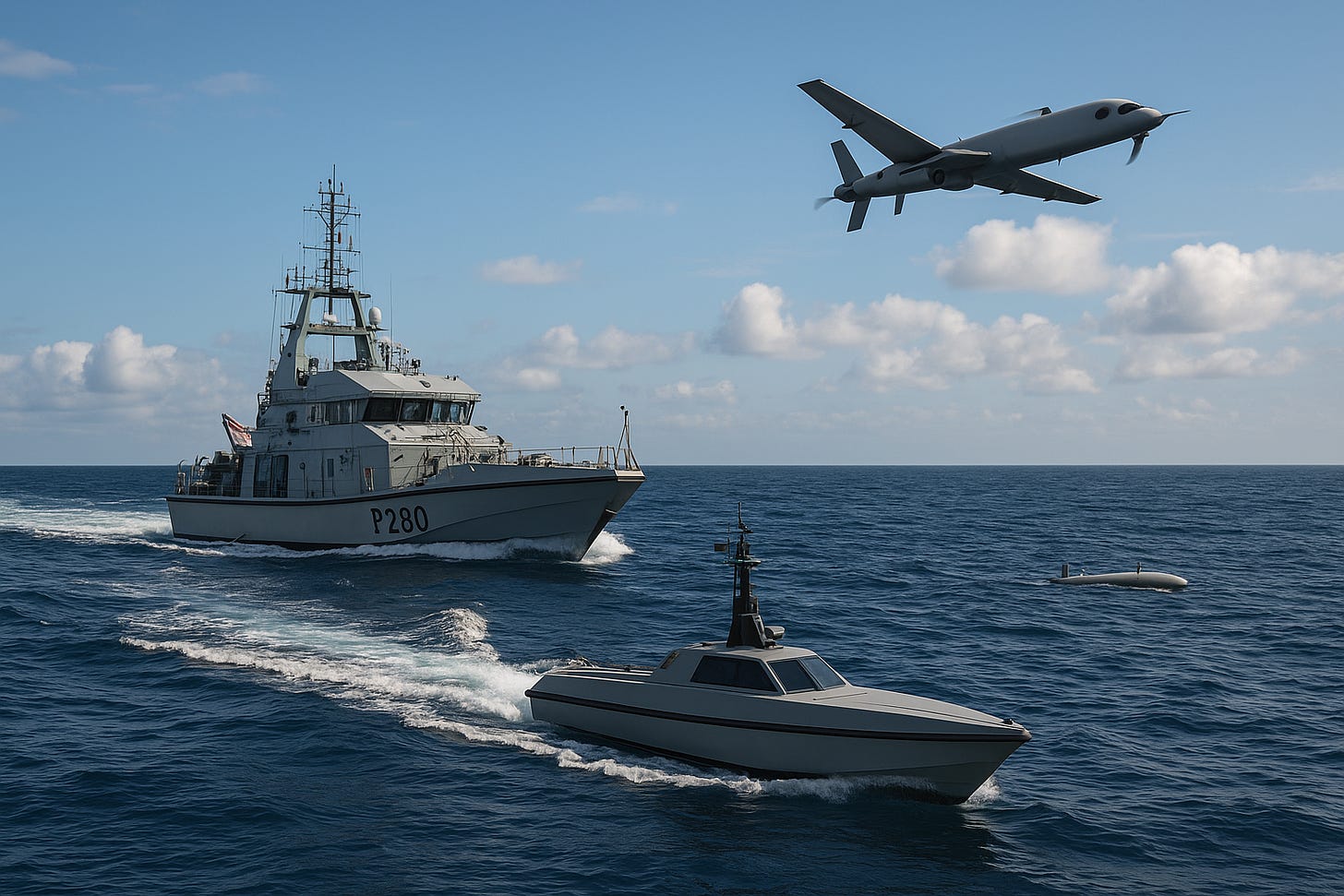Northern Coasts 2025 and the Coming AI Fleet
Northern Coasts 2025 will see 40 ships, 14 nations, and nearly 3,000 personnel in the Baltic.

When the German-led Northern Coasts 2025 NATO exercise opens in the Baltic this September, much of the focus will fall on the scale of the exercise: forty ships, fourteen nations, and almost three thousand personnel. On paper, it appears to be another extensive NATO exercise. In reality, it signals something more profound: the way alliance navies are beginning to reframe the fight for the littoral around AI, drones, and uncrewed systems.
A shift in the Baltic
The Royal Navy’s contribution is modest, four Archer-class patrol craft from the Coastal Forces Squadron. Small vessels, lightly armed, and often overlooked. Yet their presence matters. These boats operate in the shallow, congested waters of the Baltic in a way that frigates and destroyers cannot. They also serve as testbeds for new sensors, autonomy trials, and human–machine teaming concepts that are becoming central to NATO’s maritime playbook.
From manned to mixed
Exercises like Northern Coasts are no longer about simply aligning procedures across allies. They are becoming living laboratories where navies explore how to blend:
Traditional platforms — frigates, corvettes, submarines.
Lean-manned ships — designed with smaller crews and automated systems.
Uncrewed surface and subsurface craft — from reconnaissance USVs to one-way strike drones.
AI decision support — software that can sift threat data, predict equipment failure, or even control autonomous swarms.
This progression reflects broader themes in both the UK’s Strategic Defence Review 2025 and Germany’s decision to place Quadriga 2025 under its new Operational Command. The language has shifted from simply “integration” to orchestration — bringing together crewed and uncrewed assets, human judgement and algorithmic speed.
Why AI and drones now?
Three trends explain the urgency:
Grey-zone disruption: sabotage of pipelines and cables demands persistent surveillance. AI-enabled drones can loiter unseen where a frigate cannot.
Mass and attrition: no European navy can afford hundreds of new hulls. But dozens of small, cheap, attritable drones can fill gaps in numbers and complicate adversary planning.
Decision speed: missile engagements and drone swarms unfold in seconds. AI is being trained to handle the “speed and complexity” problems that humans cannot solve within a reasonable timeframe.
The Baltic as a proving ground
The Baltic is becoming a crucible for this shift. Sweden, Finland, Germany, and the UK are all experimenting with uncrewed maritime systems here. Northern Coasts 2025 provides the first opportunity since those nations joined forces under NATO to test them collectively, against a backdrop of Russian shadow fleet activity and contested seabed infrastructure.
Looking ahead
For the Royal Navy, the lesson is clear: patrol craft, drones, and AI are not fringe capabilities but the building blocks of future maritime security. The four P2000s in the Baltic this autumn are a signal that even small units have a role to play in this transformation.
As NATO adjusts to a more contested North, we are watching the beginning of a transition from a navy of ships to a navy of systems, swarms, and software.

